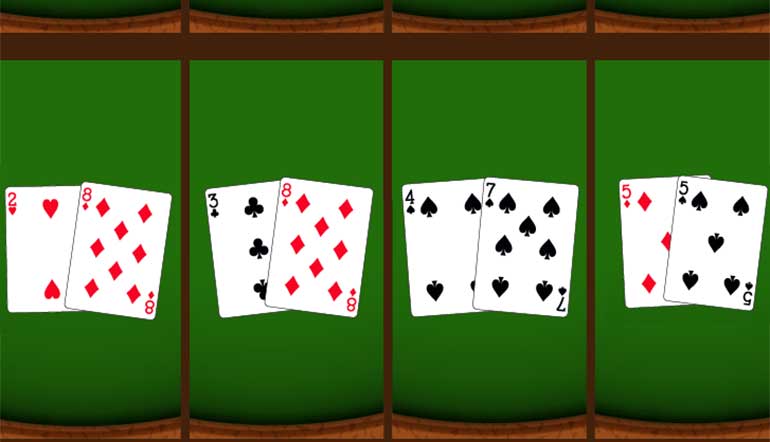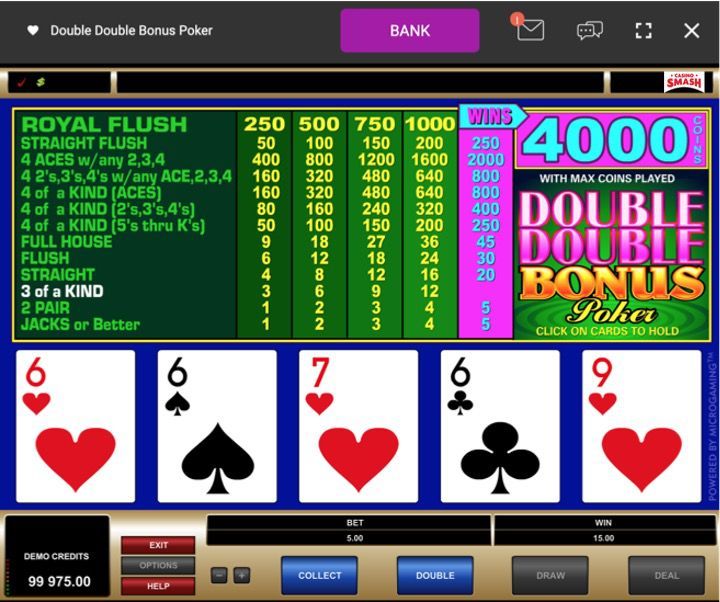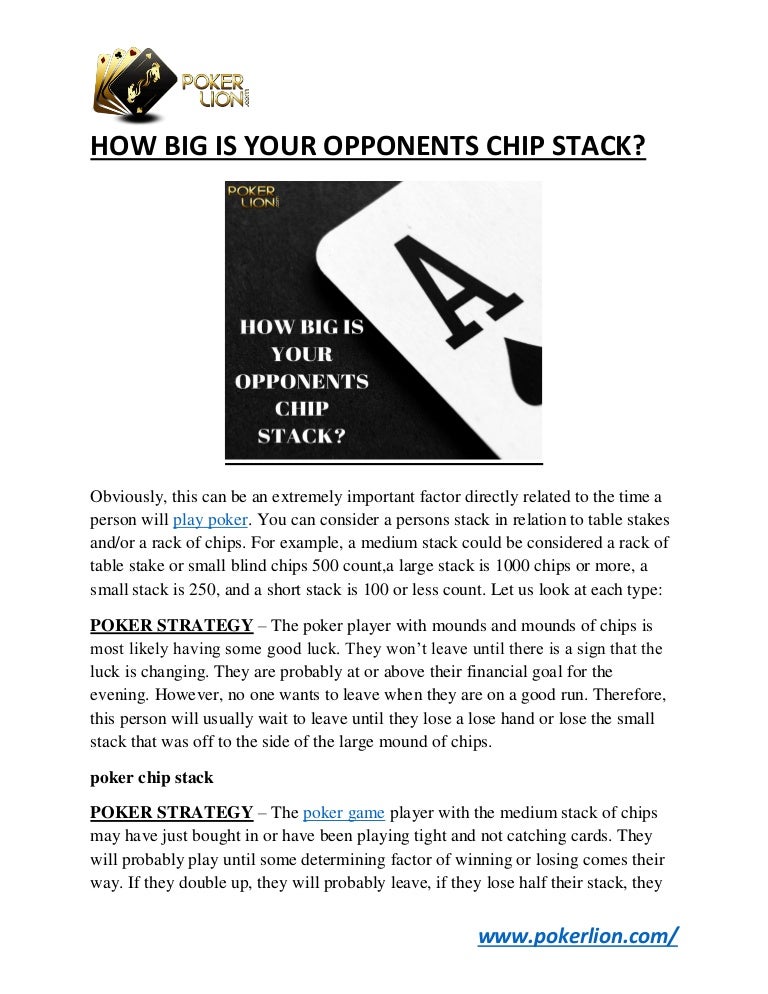Poker Double Up Strategy
Double Double Bonus is one of the most popular video poker variants. However, there are some strategy adjustments to take into account when compared to tradi. If your goal is to achieve the highest expected return then you should double up the maximum number of times, or at least until a win would put your over the W2G threshold of $1200. When I play negative pay tables online I usually double up to $100 to $1000, depending on how much action I have to grind through and my winning goal. Double Or Nothing poker tournaments are a sort of Sit & Go that's made up of one table of either 8 or 10 players. It plays out like a regular poker tournament until 50% of the original players are left. At that point the tournament ends, play stops and the remaining players get to double their buy-ins!
- Poker Double Up Strategy
- Blackjack Double Up Strategy
- Free Video Poker Double Up
- Video Poker Double Bonus Strategy
- Online Poker Strategy
How to score big payouts while avoiding the pitfalls
By Henry Tamburin
The larger payoffs come at a price; namely, the payoff for two pair is only even money (or 1 to 1). By transferring some of the game’s payouts from the more frequent two pair to the less frequent four-of-a-kind, it becomes a much more volatile game.
Double Double Bonus Poker (DDB) is the most popular video poker game in the country. That’s because it’s possible to hit several big payouts besides the royal flush, and this draws players to the game. Unfortunately, there are also some pitfalls to playing DDB, which most players are not aware of.
Table 1 summarizes the different pay schedules for DDB that you are likely to encounter. The first thing that should jump out at you is the amount of the payoffs for four-of-a-kind hands. They are rather large payoffs, especially if the fifth card in the hand (the “kicker”) is a specific card.
For example, the payoff for four Aces is 160 times your bet but if the kicker is a 2, 3, or 4, the payoff jumps to 400 coins. (That’s a 2000-coin payoff, or one-half the payoff for a royal flush, betting the maximum of five coins.) Likewise, the payoffs for four 2s, 3s, and 4s increases from 80 to 160 coins times your bet with an Ace, 2, 3, or 4 kicker. These mini-jackpots are the magnet that attracts players to this game.
What most players don’t understand is the larger payoffs come at a price; namely, the payoff for two pair is only even money (or 1 to 1). By transferring some of the game’s payouts from the more frequent two pair to the less frequent four-of-a-kind, it becomes a much more volatile game (more about this shortly).
Tabl1 also summarizes the ER for the different DDB pay schedules (bottom of each column). The best DDB game pays 10 coins for a full house and 6 coins for a flush per coin played (see Table 1). The Expected Return (ER) for 10/6 DDB is 100.07%, meaning the player would have a tiny advantage over the house if he played every hand perfectly.
There are many casinos in the Las Vegas area that offer 10/6 DDB. (Just go to either www.vpfree2.com or the video poker page on www.lasvegasadvisor.com to obtain a list of casinos that offer 10/6 DDB at different denominations.) Unfortunately, 10/6 DDB is not readily available in other areas of the country. (Partly the reason for this in that in some gaming jurisdictions, casinos can’t offer a game where the ER is over 100%). Nevertheless, it behooves you to find a casino that has at least the 9/6 DDB pay schedule, which has a 98.98% ER. (I wouldn’t recommend playing the 9/5 or 8/5 DDB games because the ERs are woeful. Again, check www.vpfree2.com for a list of casinos outside Las Vegas that offer 9/6 DDB.)
The high volatility of DDB results in most players going broke rather quickly if they are not lucky enough to hit one of the high payoff hands. In other words, most players play DDB undercapitalized. For example, supposed you were to play 9/6 Double Double Bonus instead of the much less volatile 8/5 Bonus Poker (BP). Both games have roughly a 99% expected return (ER) but the variance for 9/6 DDB is much higher (41.99) compared to 8/5 BP (20.90) Let’s assume you have a $200 bankroll and you want to play for two hours (1000 hands). By using the bankroll function in the Video Poker for Winners software program, you can determine what your chances are of going broke for each game. The results are:
Playing the low-volatile 8/5 Bonus Poker, you will lose your $200 stake only 2.55% of the time on average (that’s roughly 1 out of every 40 sessions).

Playing the more volatile 9/6 Double Double Bonus Poker, you will lose your $200 stake 28.66% of the time (that’s roughly 11 out of every 40 sessions you’ll tap out).
This means you are 11-times more likely to tap out with your $200 bankroll if you play 9/6 DDB instead of 8/5 BP. The point is this: Video poker games that are highly volatile (such as Double Double Bonus) require more bankroll to prevent going broke. (Also, your “emotional” bankroll will be tested in games that are highly volatile because you can experience some long “dry spells”.) Let me repeat this so it sinks in: DDB is very volatile.

Assuming you have the bankroll and the stomach to play DDB, you should master the playing strategy before you risk any money. The playing strategy for DDB is tricky because of the importance of the ace (see my Tip of the Month). You’ll find a playing strategy for DDB on the video poker page at www.wizardofodds.com. You should also consider practicing the strategy at home with video poker training software until your playing accuracy is at least 99% before risking money in a casino. (I recommend Video Poker For Winners or Optimum Video Poker training software, both available on my web site.) I also recommend that you purchase the DDB strategy card by Dancer and Daily and take it with you when you play so that if you are not sure how to play a hand, you can refer to the strategy card.
TABLE 1
Double Double Bonus Poker Pay Schedule
Payout Per Coin Played
10/6 | 9/6 | 9/5 | 8/5 | |
| Royal Flush | 800* | 800* | 800* | 800* |
| Straight Flush | 50 | 50 | 50 | 50 |
| 4 Aces with 2, 3, 4 kicker | 400 | 400 | 400 | 400 |
| 4 Aces | 160 | 160 | 160 | 160 |
| 4 2s, 3s, 4s with A, 2, 3, 4 kicker | 160 | 160 | 160 | 160 |
| 4 2s, 3s, 4s, | 80 | 80 | 80 | 80 |
| 4 5s-Ks | 50 | 50 | 50 | 50 |
| Full House | 10 | 9 | 9 | 8 |
| Flush | 6 | 6 | 5 | 5 |
| Straight | 4 | 4 | 4 | 4 |
| 3-of-a-Kind | 3 | 3 | 3 | 3 |
| Two Pair | 1 | 1 | 1 | 1 |
| Jacks-or-Better | 1 | 1 | 1 | 1 |
| Expected Return (ER) | 100.07% | 98.98% | 97.87% | 96.79% |
* 4000 coins for a five-coin royal flush
Tamburin Tip of the Month
You are playing Double Double Bonus and are dealt the following two hands. How would you play them?
You should break up the full house in the first hand, hold only the three aces, and draw two more cards. In the second hand, you break up the two pair, hold the pair of aces, and draw three cards.
————————————————————————————————————-
Henry Tamburin is a blackjack and video poker expert. He is the host of the smartgaming.com website and the editor of the Blackjack Insider newsletter (for a free three-month subscription, visit www.bjinsider.com/free). For a free copy of his Casino Gambling Catalog, which contains books, strategy cards, and software for video poker players, call toll free 1-888-353-3234, or visit the web store at smartgaming.com.
Card Player Magazine, available in print and online, covers poker strategy, poker news, online and casino poker, and poker legislation. Sign up today for a digital subscription to access more than 800 magazine issues and get 26 new issues per year!
In a prior installment on Badeucey, we established a set of guidelines for the starting hands we should tend to play given that we were the first player to enter the pot. In this issue, the focus will be on what hands are playable when the pot has already been opened, and the factors that should be considered in order to determine if our holding is better played as a smooth-call or as a three-bet.
Pat Hands
Whenever you hold a playable pat hand, it is almost always in your best interest to reraise the opener and try to get the pot heads-up. A seven low with at a good three card underneath such as 2 3 5 6 7 increases the odds of scooping against a single opponent.
Some caution needs to be exercised with eight lows such as 2 5 6 7 8 and 3 45 6 8 where we essentially have no badugi hand. If we are up against an early position raiser, both of these hands should probably hit the muck.
This advice may seem overly tight, particularly with 3 4 5 6 8, however a solid player opening from early position will often either have a badugi or a very strong three-card badugi that they mostly plan to showdown unimproved. If our opponent is intent on going to the end regardless what happens in the hand, we are getting freerolled from the beginning.
Poker Double Up Strategy
The situation is different when the initial raiser originates from the cutoff or later position as this range will be weaker and not as showdown bound. In that circumstance, we should three-bet 3 4 5 6 8 in the hope that the pot is played heads-up and our opponent chooses to fold sometime before showdown.
One-Card Draws

Any made badugi that is an eight or lower should be reraised for both value and protection. If the raise comes from a steal position, reraising a rougher nine badugi such as 4 6 7 9 is also correct especially if they are loose and often drawing three. Since the underlying draw of 4 6 7 draw is quite rough, keeping the nine is probably best.
Holdings such as 2 5 6 9 can go either way. In straight Deuce-to-Seven Triple Draw we would always draw two in order to try and make stronger lows and any other nine we catch later on in the hand will help us in the same manner. However, in Badeucey discarding the 9 is forever eliminating one of our better badugi outs.
Therefore, with a hand like 2 5 6 9, we should tend to reraise and be flexible with our drawing decision depending on the remainder of the preflop action. If our reraise is successful in getting the pot heads-up we should probably keep the nine and draw one, and if it goes off multi-way we should opt to draw two.
When you hold very good one-card draws with a tri such as 2 3 5 7 or 2 3 4 8 where you plan to draw one, you also want to three-bet in the hopes of isolating your opponent. Even if we bump into a badugi, with premium draws to both sides your equity and playability is often quite good. In addition, we don’t want our reraising and drawing one range to be entirely comprised of badugis.
Three-Card Badugis (i.e. Two-Card Draws)
With three-card badugis, the decision between three-betting or just smooth-calling is often close. When making it we should take into account the opener’s position, your position, your hand, and the skill level of the players left to act behind you. For example, facing a somewhat tight early position opener with weak players in the blinds, flatting your entire three-card badugi range has merit in order to invite action players to enter the pot.
However, in most other situations it is usually best to reraise premium three-card badugis such as 2-3-5, 2-4-5, 3-4-5, 2-4-6, 2-3-7, and 2-4-7. There’s a value component to three-betting these hands in addition to increasing our scooping chances. In addition, as we discussed last issue, these hands effectively realize their equity relative to our opponent.
In particular, 3-4-5 gains tremendously getting the pot heads-up as it can win the badugi side unimproved, but can struggle to make strong lows due to potential straight draws. Hands such as 2-3-7 and 2-4-7 will not often win the badugi side unimproved, however, these holdings have strong two-way potential and three-betting them helps balance against doing so with only the lowest of our tri holdings.
Weaker three-card badugis should mostly be flatted and which hands are playable are a function of your opponent’s playing style, the position from which he opened, and your position. For example, if a tight player opens from first position and we are one seat over in the hijack we should fold a mediocre hand like 2-6-8.
While position helps, it’s hard to envision that our opponent is opening many worse hands thus we should not seek out an uphill battle with so many players left to act behind us. In this situation, the bottom of our continuing range would probably be holdings such as 3-4-6 and 2-4-8. These hands make stronger badugis than 2-6-8 and also have the potential to reduce our incomplete to a three-card four.
Blind Defense
From the big blind you are getting good odds to continue against a single raise, however, it is difficult to defend profitably with as many hands as you can in another game such as Omaha eight-or-better. In Omaha hi-lo, you can take a flop with a somewhat junky hand and have a villain’s A A 2 3 drawing nearly dead once those three cards come down. However, in Badeucey your rough draws will only make rough hands, thus when you are up against the very top of your opponent’s range no miracle can save you.
Blackjack Double Up Strategy
When an opponent opens from early position, we must respect that range and play somewhat tight. While we can probably defend with any three-card seven or a smooth eight we must resist the temptation to play rougher holdings such as 3 7 8 that have reverse implied odds.
Free Video Poker Double Up
Cutoff and button opens are weaker, thus given the pot odds we can mostly defend any holding that we would have opened from those positions had the situation been reversed. For example, we can defend un-suited 2-3, 2-4, 2-5, and 2-7 holdings as well as a two-suited hand such as 2 3 7. Three-card badugis such as 5-6-8 and 3-7-8 are borderline plays; calling a button raise is fine but it is probably best to fold them against a cutoff open.
It may not seem like we are defending a lot of hands but the responsibility is also borne by the small blind to ensure that an over aggressive late position opener will not automatically profit. Against a very loose raiser the best response is to punish them with more three-bets with your good hands as opposed to loosening up your calling standards significantly. In addition, someone playing too many hands from late position will often get punished later on in the hand as they are usually playing rough draws with reverse implied odds.
Video Poker Double Bonus Strategy
In Badeucey, getting too far out of line before the first draw will often cost you money in the later rounds. A solid foundation of starting holdings is required to successfully navigate the later streets. ♠
Kevin Haney is a former actuary of MetLife but left the corporate job to focus on his passions for poker and fitness. He is co-owner of Elite Fitness Club in Oceanport, NJ and is a certified personal trainer. With regards to poker he got his start way back in 2003 and particularly enjoys taking new players interested in mixed games under his wing and quickly making them proficient in all variants. His new mixed-games website Counting Outs is a great starting resource for a plethora of games ranging from the traditional to the exotic. He can be reached at haneyk612@gmail.com.